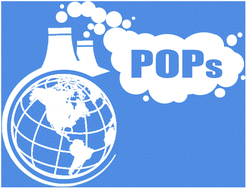What do we know about the production and release of persistent organic pollutants in the global environment?†
Abstract
Information on the global production and environmental releases of persistent organic pollutants (POPs) is of critical importance for regulating and eliminating these chemical substances of worldwide environmental and health concerns. Here, we conduct an extensive literature review to collect and curate quantitative information on the historical global production and multimedia environmental releases of 25 intentionally produced POPs. Our assembled data indicate that as of 2020, a cumulative total of 31 306 kilotonnes (kt) of the 25 POPs had been synthesized and commercialized worldwide, resulting in cumulative releases of 20 348 kt into the global environment. As of 2020, short-chain chlorinated paraffins were the most produced POP, with a historical global cumulative tonnage amounting to 8795 kt, whereas α-hexachlorocyclohexane (HCH) had the largest historical global cumulative environmental releases of 6567 kt among these 25 POPs. The 1970s witnessed the peak in the annual global production of the 25 investigated POPs. The United States and Europe used to be the hotspots of environmental releases of the 25 investigated POPs, notably in the 1960s and 1970s. By contrast, global environmental releases occurred primarily in China in the 2000s–2010s. Preliminary efforts are also made to integrate the production volume information with “hazard” attributes (persistence, bioaccumulation, toxicity, and long-range transport potential) in the evaluation of potential environmental impacts of the 25 POPs. The results show that dichlorodiphenyltrichloroethane (DDT) and polychlorinated biphenyls (PCBs) are potentially associated with higher environmental impacts than other POPs because they are among the top rankings in both the global cumulative production and hazard indicators. This work for the first time reveals the astonishing magnitudes of POP production and environmental releases in contemporary human history. It also underscores the importance of tonnage information in assessments of POPs, POP candidates, and other chemicals of emerging concern.

- This article is part of the themed collections: Environmental Science Advances Recent Review Articles, Outstanding Papers of 2023 from RSC’s Environmental Science journals and Outstanding Papers 2023 – Environmental Science: Advances


 Please wait while we load your content...
Please wait while we load your content...